Special Edition Sports Coupe
Editor’s Note: We don’t usually run back-to-back road tests of sports cars, but Road Test Editor John Faulkner had a chance to experience two of Toyota’s latest efforts, so we’re linking the two stories together so you can compare and contrast. Here’s a quick link to the Supra story. Two joint venture vehicles that can take you to a fun place.
When Toyota disbanded the Scion division in 2016 there was no way they were abandoning the FR-S, so it was renamed the 86, pronounced “eighty-six” or “eight-six”. The name is a reference to the vehicles’ development code, with the digits “8-6″ translating into “iconic father”, honoring heritage Toyota models.

Clean Fleet Report drove the 2020 Toyota 86 Hakone, and strongly recommends this fun and affordable sports coupe to anyone that likes curvy roads, a third pedal and rear-wheel drive.
A Diminishing Breed

The auto market is dominated by front-wheel drive cars, with primarily trucks and a few cars being pushed rather than pulled, which is too bad. The enjoyment of driving a rear-wheel drive car grows with more and more hours behind the wheel, and then ramps up higher if you are driving a sporty car. Add to that a rare manual transmission, and the possibilities for big smiles to match the miles ahead are endless.
The 2020 Toyota 86 is the lowest priced rear-wheel drive, 200+ horsepower sports coupe on the market.The distinction of coupe is important as the Mazda MX-5 Miata is the lowest priced two-seat rear-wheel drive convertible sports car on the market. You want performance and handling with a fixed roof, then look no further than the Toyota 86. If you want to stay in the Toyota family and are seeking even more power and performance–and have $20,000+ more in your budget–check-out the all-new Supra. You will quickly see that Toyota takes sports cars seriously.
Driving Experience: On the Road
The 2020 Toyota 86 is powered by a naturally aspirated 2.0-liter four-cylinder boxer engine producing 205 horsepower and 156 pound-feet of torque, pulling hard through 6,400 rpm. The zero-to-60 times were right around 6.2 seconds, but straight line speed is not why anyone should be buying an 86.

The Subaru-designed and built boxer engine, which has horizontally opposed pistons instead of ones configured in a V or inline pattern, uses Toyota’s direct and sequential port injection system and runs on 92 octane. The boxer design was invented by Karl Benz in 1896. Yes, the Benz of Mercedes-Benz. In recent automotive history the boxer design has been used by, among others, Porsche, Volkswagen and Subaru, the latter of which shares a platform with the Toyota 86 with their BRZ.
Clean Fleet Report’s 86 was equipped with a six-speed manual, while a six-speed automatic with paddle shifters is optional. The 86 is EPA-rated at 21 mpg city/28 highway/24 combined. In our week in the 86, we drove 325 miles throughout Southern California and averaged 28.8 mpg. But in two 100-mile freeway runs at 70 mph we averaged 32.4 mpg. The take-away is that even in a sporty car it is possible to get respectable fuel economy. But let’s get real here, who will be buying the 86 to squeeze miles from every tank of fuel?
The six-speed manual in our 86 was designed for aggressive shifting and loves taking the engine high in the rev band. The low-end torque in each gear was so-so, but becomes much better when taking the 86 between 6,400 and 7,500 rpm, which coincidentally is where the fun and spirited driving lives. The tach has a 9,000-rpm maximum, but please don’t take it there! The manual has notchy shifts, so while the throws are short (which is good), you also must hit the gear precisely, or you will be in the wrong gear. Shifting is smooth, but if you are going through the gears rapidly and go from third into sixth instead of into fourth (which is close-by sixth), your acceleration momentum will end, and your salty language will begin. There is a gear indicator and uplift arrow, but I didn’t spend much attention looking at the dash lights.

Particularly fun is when the 86 pulls hard in the top-end of third, fourth and fifth. Heck, you can even get to 50 mph in second, so wringing-out the speed, approaching red line, is what this car loves and is built for.
The 2020 Toyota 86 has a rough ride at freeway speeds, but cuts through the wind with underbody aerodynamic panels for a very respectable 0.27 coefficient of drag. The 86 shines with its predictable handling from the tuned chassis and the point-to-a-spot steering that was enhanced by the electric power steering. Feel was excellent, but included some jolts when encountering road imperfections. The handling was crisp, agile and very fun, dialed-in by a MacPherson strut front suspension, double-wishbone rear and stabilizer bars at both ends, along with vehicle stability and traction control. The limited-slip differential sends torque to the rear wheel that has the most traction. The Michelin Primacy 215/45 tires handled the 2,799-pound 86 enthusiastically, making it easy to toss around. For even more fun, switch off the traction control and practice controllable oversteer as the backend steps out. This is the beauty and adventure of driving a rear-wheel drive sports car.
Braking was solid, with power ventilated front and rear discs, four-wheel anti-lock brakes, electronic brake distribution and brake assist.
Hakone Special Edition: Exterior
The 2020 Toyota 86 Hakone, pronounced “Hah-CO-nay,” a one-year only special edition, is named in tribute of the Hakone Turnpike which, Toyota says, is “two hours southwest of Tokyo and one of the great driving roads in the world.” After a week in the 86 Hakone, it makes us want to hop on a JAL 747 and search out that great driving road.

The 86 has aggressive styling with a stance that welcomes/invites/urges/demands it be driven fast. The proportions for this low-slung sports car is one of the first things you notice. With 4.9-inches of ground clearance and a mere 52.0-inches of overall height, the 86 just may be the lowest car you have ever driven.
The front end is dominated with angular LED projector-beam headlights and fog lights in the outer edge of the fascia. The swept back windshield leads to the undulating roof, then to a rapidly declining roofline, which is topped by a color-keyed shark fin antenna. The rear window drops down to a short trunk lid, ending with a tasteful and attractive spoiler. The back-end has horizontal LED taillights and cool-looking chrome-tipped twin exhaust ends that are integrated into a wind-channeling lower fascia, which has the most uniquely-designed back-up light set-up. Make sure to look for the Easter Egg “86” etched on the headlights.
Design elements unique to the Hakone is the striking Hakone Green paint (with a sparkly flake) that harkens back to the race cars that donned British Racing Green. The heated power outside mirrors are color-keyed as are the aero end plates on the matte black-painted rear wing. To really set the Hakone Edition apart from the other 86 models, the 17-inch bronze alloy wheels pop against the green paint.
Hakone Special Edition: Interior
The 2020 Toyota 86 Hakone has an honest sports car approach to the interior design, with gauges that are clean and simple. The analog tachometer that has a programmable rev indicator, is the largest gauge and resides right smack dab in the middle of the cluster. The analog and digital speedometer, fuel, G Force meter, and temperature gauges sit to the sides of the tach.

The 86 Hakone has unique interior elements such as two-stage heated sport front bucket seats with tan leather bolsters, and black Alcantara inserts with black contrast stitching. There is synthetic suede on the top of the instrument cluster hood, door panels and on the glove box. Leather, with contrasting topstitching, is also found on the gear shift boot, parking brake handle and the steering wheel. There are embossed “86” badges on the glove box and the cargo area deep pile carpet. Minimal, tasteful aluminum is used throughout the cockpit, including on the sport pedals and door sills.
That aforementioned 4.9-inches ground clearance means getting into the driver’s seat takes a combination of bending, squatting and leg swinging. If you are at all nimble, this won’t be a problem, but if you are used to hopping into and out of a crossover, you will learn a few new skills. But take note that the 86 is roomier inside than the Mazda MX-5 Miata or Fiat 124 Spider.

The manually adjusted driver’s seat offers a base level of support, but with the stiff suspension and no lumbar adjustment, your bottom and backside know you have been driving a sports car. Sight lines are not bad from being in such a low sitting position, but the high-mounted third brake light could be repositioned as it obstructs a bit of the view out the rear window.
Toyota classifies the 86 as a 2+2, meaning it is designed for two passengers up front and two in the rear. In a pinch, the rear seat might accommodate a small child, but an adult is out of the question. The best use for the one-piece rear seat back is to fold it flat, taking advantage of increasing the cargo area, and creating a spacious area.
The eight-speaker audio system was centered in a 7.0-inch touch screen display for the AM/FM radio with Android Auto and Apple CarPlay compatibility. The infotainment system was also equipped with a USB port, Bluetooth streaming audio, hands-free telephone and voice recognition. SiriusXM is not available. There are steering wheel-mounted controls that help navigate the audio system, but a better overall design would be nice to see on the next generation 86.
Safety and Convenience
The 2020 Toyota 86 comes standard with safety features including six airbags, rear-view backup camera (located in the rearview mirror), tire pressure monitoring system, cruise control, remote keyless entry, push button on/off, power door locks, windows and outside heated rearview mirrors, carpeted floor mats, and dual zone climate control. Safety systems included vehicle stability control, traction control, anti-lock brakes, electronic brake force distribution, brake assist, and stop/start technology.
The 2020 Toyota 86 has earned four out of five stars for the front driver and passenger crash rating by the US Government National Highway Traffic Safety Administration (NHTSA) while the Insurance Institute for Highway Safety (IIHS) gave the 86 Good and Acceptable safety ratings.
Pricing and Warranties

Base pricing for the 2020 Toyota 86, with the six-speed manual, is $27,060 and $27,780 for the six-speed automatic. Clean Fleet Report’s 86 Hakone Special Edition had a base MSRP of $29,870. Including the $955 delivery, processing and handling fee, the final price came to $30,825.
The 2020 Toyota 86 comes with these warranties:
- Powertrain – Five years/60,000 miles
- Basic – Three years/36,000 miles
- Maintenance – Two years/25,000 miles
- Roadside Assistance – Two years/25,000 miles
- Corrosion Perforation – Five years/Unlimited miles
Observations: 2020 Toyota 86 Hakone Special Edition, Six-Speed Manual
Calling all those that like, nay…love to drive! You know who you are, the kind of person who would prefer to drive the 7+ hours from Los Angeles to San Francisco rather than wing there in an hour.

The 2020 Toyota 86 is a fun car to drive, and the fact you can get into one for about $27,000 makes it a true value proposition. Driving enthusiasts will certainly be attracted to the 86 as it is engaging. Is the 86 fancy? No, but it is well thought-out with deference to handling and performance over gimmicks and flash.
Clean Fleet Report is a fan of rear-wheel drive sports cars, such as the Toyota 86, the Subaru BRZ, the Mazda Miata MX-5 and the Fiat 124 Spider. (Note: The 124 Spider stopped production with the 2019 model year.) You can spend much, much more for sports cars than these four, but the fun-per-dollar equation will be significantly higher.
If you really want to take your driving experience up a notch, fold down the rear seat, toss in some race tires and head out to your local track. There are high performance on-track organizations where, for a very reasonable cost, you can drive your car on some of the best courses in the country. Lapping your 86 with expert instruction will reveal its full performance potential.
While at your local Toyota dealer checking-out the 86, and your eye catches the all-new 2020 Supra, we will understand your lust rush. The Supra delivers high-end performance in a sleek, sexy design. You will want to ask your sales representative about taking a test drive, but first ask yourself if the Supra, with a $20,000+ price over the 86, is in your budget. If so, go for it, you won’t be disappointed!
Make sure to opt-in to the Clean Fleet Report newsletter (top right of page) to be notified of all new stories and vehicle reviews.
Whatever you buy, Happy Driving!
Photos by Lex Adams
Related Stories You Might Enjoy—More Four-Wheel Fun Cars
Road Test: 2019 Mazda Miata MX-5
Road Test: 2019 Fiat 124 Spider Abarth
Road Test: 2020 Toyota Supra
Clean Fleet Report is loaned free test vehicles from automakers to evaluate, typically for a week at a time. Our road tests are based on this one-week drive of a new vehicle. Because of this we don’t address issues such as long-term reliability or total cost of ownership. In addition we are often invited to manufacturer events highlighting new vehicles or technology. As part of these events we may be offered free transportation, lodging or meals. We do our best to present our unvarnished evaluations of vehicles and news irrespective of these inducements.
Our focus is on vehicles that offer the best fuel economy in their class. We also feature those that are among the top mpg vehicles in their class. In addition, we aim to offer reviews and news on advanced technology and the alternative fuel vehicle market. We welcome any feedback from vehicle owners and are dedicated to providing a forum for alternative viewpoints. Please let us know your views at publisher@cleanfleetreport.com.

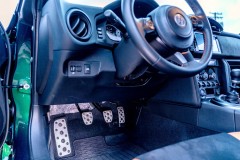

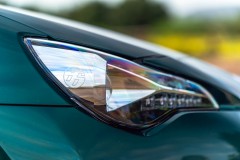

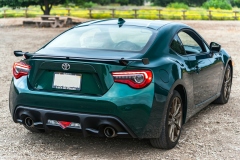
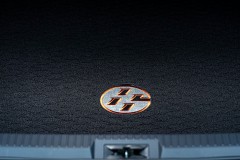
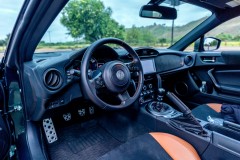
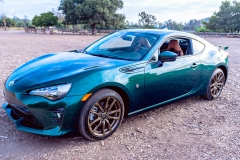
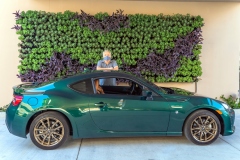
9 thoughts on “Road Test: 2020 Toyota 86 Hakone”